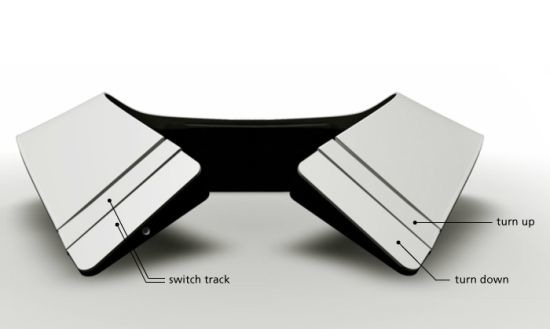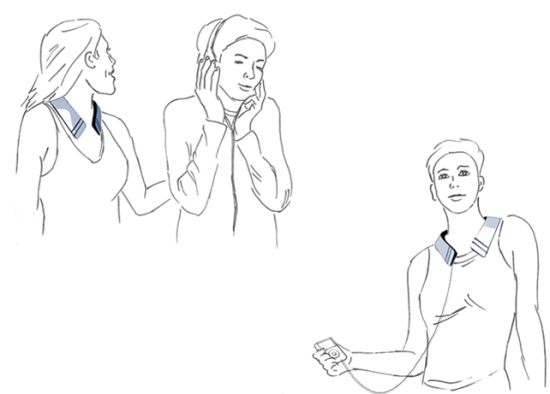Bezalel Academy of Arts and Design graduate Liron Gino has designed a set of jewellery-like devices that allow people that have challenge hearing to experience music through vibration.
The Vibeat collection is an alternative to headphones that features a necklace, bracelet and pin with circular modules attached to them.
What is music like when you can’t hear it? It’s a question that sounds like a philosophical debate on par with trees falling in the woods and single hands clapping, but this is not a question for rhetorical amusement, it’s something that audiophiles as well as hearing people in love with signed languages and Deaf culture have thought about in depth. What is the deaf person’s experience with an art form that is seemingly only valued by those with fully functioning cochleas?
There is a notion that music is only heard and thus, can only appreciated by the hearing. However, deaf people have a unique and challenging perspective to music that has seldom been explored outside of deaf communities. With in the deaf and hard of hearing world, there are people not only creating music, but people who love and make music a part of their lives. In this world, the various shades of gray are celebrated as the spectrum of deafness, from slightly hard of hearing to “stone deaf” are all part of this community. The experience of sound can be different for many people who’s abilities with hearing are not clearly identified in terms that hearing people are used to. it is never an either/or experience, and definitely not something that the hearing world can understand completely.
Most of us assume deaf people can’t register sound, let alone enjoy Rachmaninoff. Wrong. A conceptual device from German designer Frederik Podzuweit taps into the deaf’s ability to feel music.
Music for Deaf People is a collar that converts auditory input into vibrations, triggering the same sound-processing brain regions in those with full hearing. So instead of listening through your ears, you effectively listen through your skin. The collar has a special membrane substance, which responds to electricity, dispatching the vibrations of whatever you’re playing—be it Sinatra or Sepultura—to your neck, shoulders, and collarbone. Adjustable, it fits snugly around your neck so you could theoretically wear it jogging or at the gym—never mind that it looks like something straight out of a Stormtrooper’s closet. (Nerds probably think that’s a good thing.)
To the uninitiated, it might seem like a nonstarter, a pointless gadget resigned to the annals of air-conditioned T-shirts and ShamWow! Why would deaf people want to “hear” music? The answer, of course, is for the same reason everyone else does: Music is one of life’s enduring pleasures.
Music for Deaf People collar

There’s a lot of fascinating research into how deaf people experience music. Researchers at Ryerson University designed a chair that transmits musical vibrations along the back, turning sound into a sort of multi-sensory cheesecake. One person described it like this: “The first time I used the chair, I was blown away by the amount of information I could get about music from the vibrations. For the first time in my life, I could feel sad or happy because of how the music vibrations felt on my skin. I never felt those kinds of feelings before when music was played.”
Music for Deaf People collar

It’s even possible, in certain cases, that deaf people experience music more powerfully because they can’t hear; as Oliver Sacks tells it in Musicophilia, the auditory cortex might become extra-sensitive when hearing slips. Beethoven, you’ll recall, was completely deaf when he composed his dazzling Symphony No. 9.
The main drawback we see in Music for Deaf People is that the collar seems terribly uncomfortable. On hot days, a big hunk of plastic is the last thing you want around your neck. Would the concept work just as well around your wrist or your bicep? If anyone has any ideas, we’re all, um, ears.
Music for Deaf People

